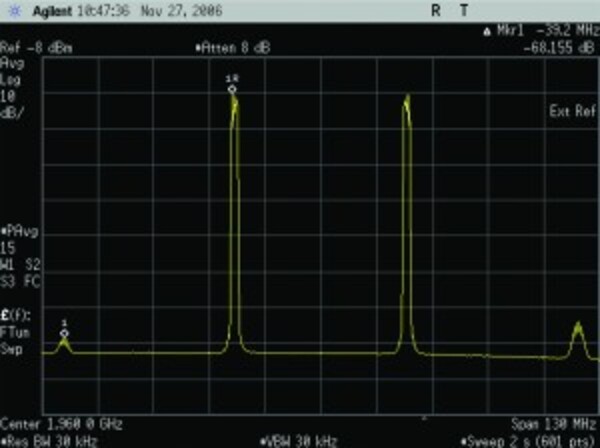Editor’s Note: This is the eighth installment for our “Meet the RF Experts” series in which contributors to the Understanding the RF Path e-book elaborate on subjects in their areas of expertise.
Passive intermodulation (PIM) can occur at any point in the transmission path. PIM is the result of two or more wireless signals mixing together creating additional, undesired frequencies that cause interference or degraded transmission of desired signals. PIM has long been recognized as an obstacle to network efficiency and engineers have acknowledged its existence and disruption potential.
Isolation between the transmit and receive paths is important to keep unwanted intermods created in the transmit path from ending up in the receive path. A typical duplex communications system will use the same antenna to transmit and receive. It will also use this same antenna to transmit many frequencies and receive their partnering frequencies. This involves using a duplexer to put the transmit frequencies onto the same port that the receive signals are coming in on. The system benefits from any PIM components that are produced in the transmit path before the duplexer having a high isolation to the receive path. The typical rejection of receive frequencies on the transmit port of a duplexer is around 70–80 dB.
However, this highlights the importance of using products that have superb PIM performance after the duplexer.
PIM elements that are produced after the duplexer will be allowed to travel directly down the transmission path to the receiver. This will raise the noise floor of the receiver, effectively reducing the uplink footprint of the base station, or if it is severe enough, blocking all traffic on that sector.
I recently used some old power amplifiers that we had acquired to do some PIM testing within our lab. By using one of our combiners that had excellent isolation, any intermods produced by the old amplifiers were filtered out. Remembering, of course, that “filtered out” means “reduced to a point of inconsequence.” PIM has always been there and will always be there; it’s how we manage it that makes it inconsequential.
To learn more about PIM, check out chapter 8 in the Understanding the RF Path e-book, review the content on our PIM Happens webpage, or if you’re really ambitious, sign up for the Understanding the RF Path online course. If you have any PIM related questions, leave a comment below.








